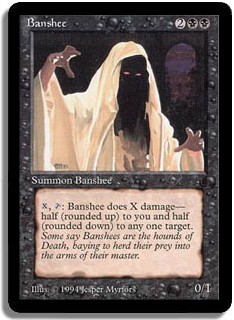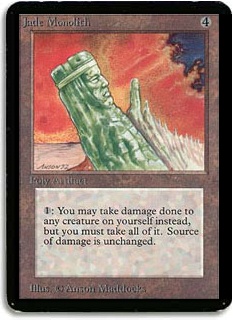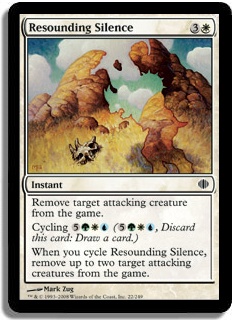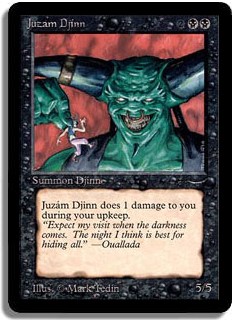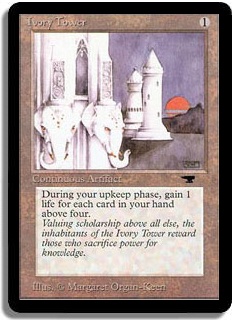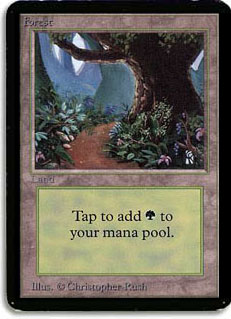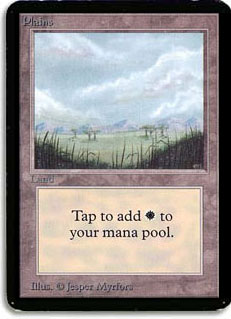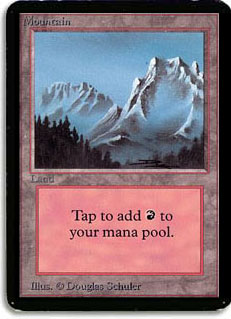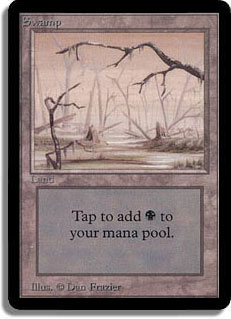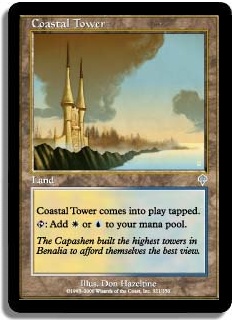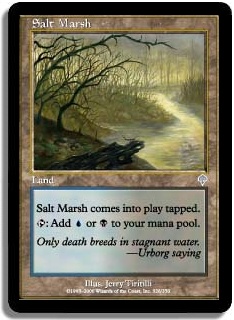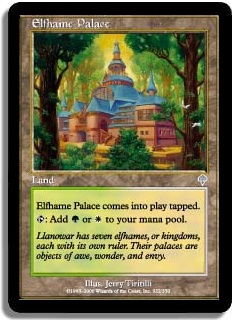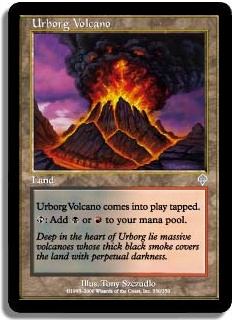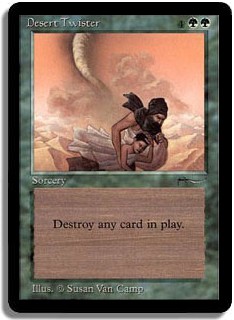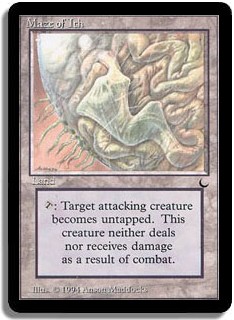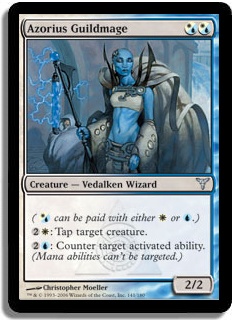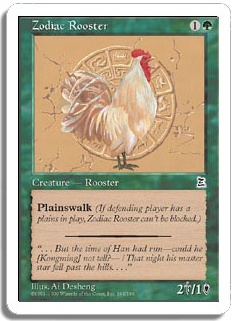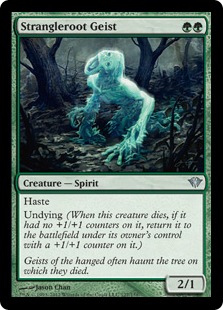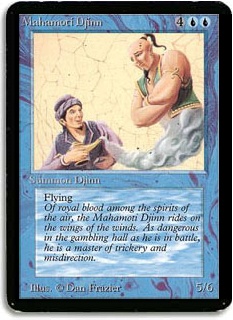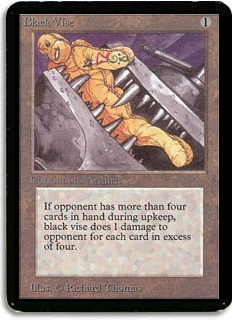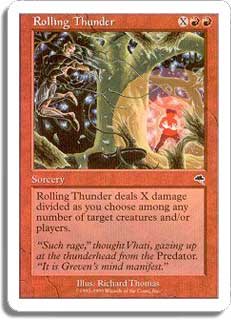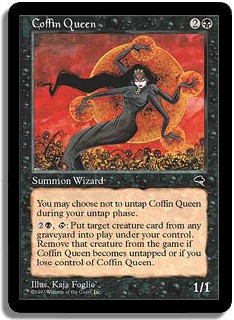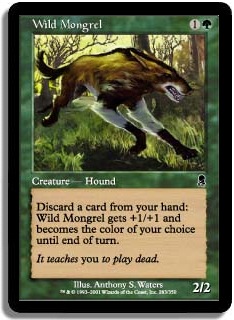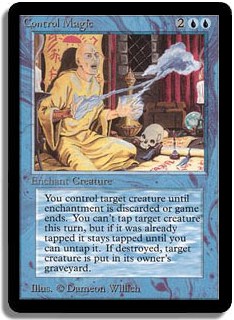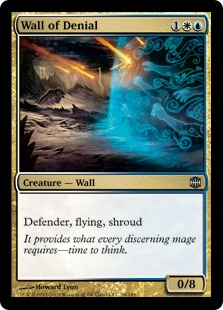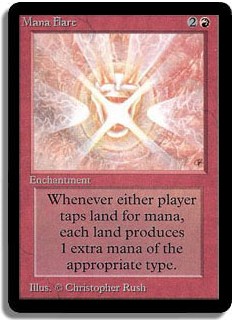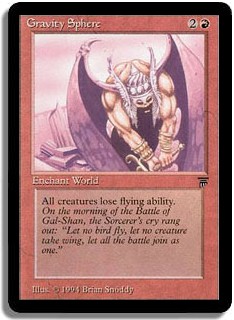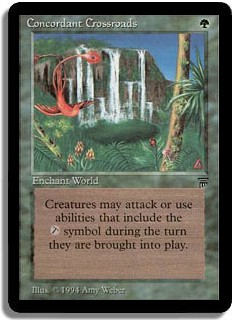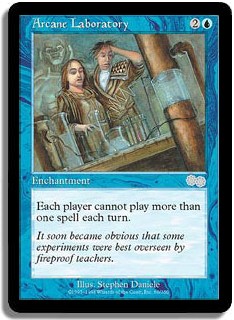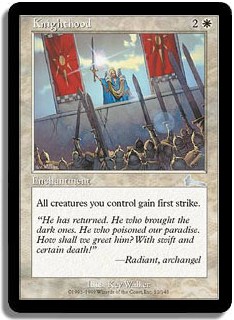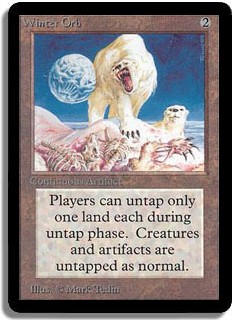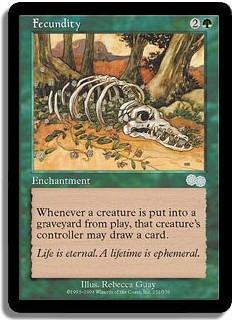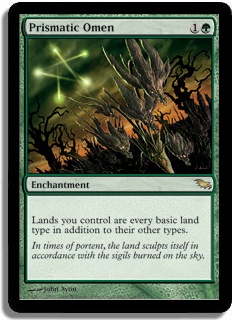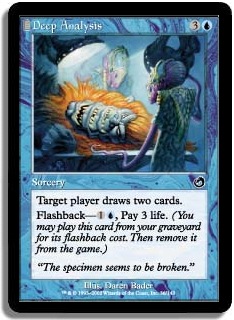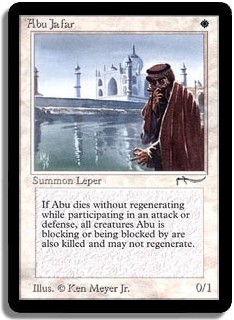Introduction
In this week’s installment of Vintage Avant-Garde we are going to briefly leave the familiar landscape of Vintage and venture into the brave new territory of The Danger Room, a new casual format that I came up with and have been enjoying playing with my friends.
For those of you who have never met me in real life, I must first start by explaining that my fondness for Magic far exceeds the boundaries of the traditional Constructed and Limited formats. I consider myself to be a unique player in that I routinely play and am knowledgeable of not only every single supported Constructed format that has ever existed but also possess a vast expertise and enthusiasm for non-traditional formats.
Mental Magic, the 1Mana-2Mana-3Mana Game, Zero Variance, EDH, Peasant Highlander, Cube Draft, 5-Color (I was the runner up at the 5C World Championships), DC-10, Pack Wars, Type 4, Type 5, and Emperor; I have played them all extensively and consider myself to be very, very good (if not an expert) on most if not all of these fringe (and in some cases extinct) formats.
With Cube Draft being all the rage these days, especially in light of the advent of Magic Online Cube Draft introducing that type of game to a whole new audience, it can certainly be said that there is a real space, market, and enthusiasm for fun and challenging game play that lies outside of the realm of the traditionally popular Constructed formats. With that in mind, I’d like to share with you the new format I’ve designed (The Danger Room) and explain not only the basic concept and rules for the game but also why I believe it is a great format and why it has a lot of replay value.
Are you interested in winning games of Magic by making sweet plays with awesome cards like:
“I cast Juzam Djinn today, no big deal.”
Today alone, I have gotten to cast all of these cards—in one game—and it was AWESOME.
Enjoy!
The Danger Room: How It Works and Rules
First of all, The Danger Room is an allusion to the training ground featured in the X-Men comics. I think it is an accurate correlation in the sense that this format is very skill testing on a number of levels.
The game itself is played with one big deck of preselected cards that is shared by all of the players in the game. The deck is all spells of various types, casting costs, and colors and can be modified depending upon the preference of the player who builds the deck.
Each player is also provided with a Mana Cache, which is always made up of the following cards:
One of each basic land and one of each Invasion comes into play tapped allied color dual land.
Each player starts the game with the full allotment of the ten-card Mana Cache outside of the game and may play one land from zone, of his or her choice, each turn. So basically each player is guaranteed to hit their first ten land drops in a row (one per turn) and has a choice of the order in which these lands enter the battlefield.
One thing that is elegant about the design of the game is that in order to get double of a single color of mana a player must sacrifice tempo and play a land tapped. The order that one plays their lands is really important because having the correct combination of double color mana requires that a player put lands onto the battlefield tapped in anticipation of having the correct colors on the subsequent turn.
Another important aspect of the design of the big deck, which compliments the function of having a Mana Cache, is that there are no spells that destroy, steal, or impede the progression of a player’s Mana Cache, nor are there any spells that produce mana in addition to the ten provided for a player in the Cache.
Which leads the following statements to always be true in The Danger Room:
- No player can ever produce more than ten mana in a turn.
- No player can ever produce more than triple of an individual color.
- No player can ever ‘get ahead’ of the other in their ability to make mana.
- Every player has equal access to resources for casting spells at every point in the game, and there is literally no way to get ahead afforded to players.
The design of having the mana predetermined and outside of the deck means that there is actually no way for a player to get ‘mana screwed,’ and since there is no mana in the big deck, there is no way for a player to get ‘mana flooded’ either since every single draw step will yield a player a spell.
We have tried a lot of different iterations of the game so far, but the one that seems to be preferred thus far:
Each player starts with six cards drawn from the big deck, each player draws one card per turn, each player starts with 20 health, and each player has a maximum hand size of nine.
(The increased maximum hand size was determined to be necessary because players are not playing lands from their hands. We found that the player on the draw would often have to discard if they were not able to play cards on the first few turns.
Balancing the Big Deck
Now let’s talk about the big deck itself, since it is where all of the actual business of the format resides.
The cool thing about this format is that any player who wants to build their own stack can shape and tailor their big deck in any way they choose. Depending upon the kind of cards one selects to play with, it will provide players with a very different game play experience. Similarly to the way that Cube Keepers can vastly influence the type of games that get played during their Cube Drafts by virtue of the actual cards they choose to include (do you have a Combo Cube, Creature Cube, Powered Cube, or Pauper Cube?), the exact same can be said of The Danger Room.
The first thing, which I have already stated, is that there is no way to produce or destroy extra mana—although I could certainly see a case made for adding Mana Elves or Signets, I don’t think it adds much so I haven’t.
To put the idea of how important a mana advantage is in a format with set mana, the very first card I had to cut from my big deck, because it was ambiguously the far and away best and most powerful card in the stack, was:
“Six mana Stone Rain was waaaaaay too good.”
I had a sweet Arabian Nights Twister and figured that most of the time it would simply be a nice catchall removal spell and that at six mana if people wanted to waste the powerful effect on a Stone Rain, well, whatever. How wrong I was. The first time I actually drew it in a game, I immediately realized that this card had no other function than to be a Stone Rain and that Stone Rain was far and away the most powerful effect available!
Since my big deck is designed to provide for games that go beyond ten turns by virtue of having a lot of good defensive cards, it simply turned out that always having 10% more resources the entire game was a tremendous and almost insurmountable advantage. Not to mention that if one hit a dual (which you always would), it permanently disabled the opponent’s ability to make triple of two colors—or double of whatever color dual got destroyed in the same turn. (If Frost Marsh got destroyed a player was unable to make BB or UU in the same turn).
Even at a very high cost, messing with mana was simply too good in a format designed to provide parity in resources.
“Even in formats that can kill a Maze of Ith, it is usually awesome, but in a format where it’s untouchable it is also unbeatable.”
Maze of Ith was the next card to leave the big deck since having cards that destroy resources was undesirable; even though Maze didn’t provide additional resources, the mere fact that there was no card to answer it made it obnoxious and virtually unbeatable.
The other defining quality of my big deck is that it doesn’t provide cards that are singlehandedly capable of taking over a game and ending them all by themselves. The vast majority of the cards in my big deck are good commons and uncommons rather than extremely powerful rares and mythic rares that can take over and win the game with ease.
As the nature of my cube tends to lend the advantage to defense rather than beatdown, planeswalkers proved to be overpowered (they are pretty powerful in general) and are therefore absent from my deck.
Another good rule of thumb for building a big deck is not to play with Tutors or cards that manipulate the top of the shared deck. The justification for this is pretty simple; in the case of Tutoring through a 600-card deck, having 600 options is simply too good, and waiting for a player (especially one who isn’t familiar with the stack) look at 600 cards to figure out what they want is time consuming, boring, and therefore undesirable.
In the case of manipulating the top of the library, it isn’t very fun to create a situation where my opponent is forcing me to draw bad or situationally irrelevant cards, especially repeatedly. Even though people split the deck into two halves (for the sake of convenience of reach) and each play off a half, it isn’t really in the spirit of the format to manipulate draw steps in big deck. Every draw step an adventure, I say…
I like to Cube Draft, however, one of my criticisms of Cube (and Constructed Magic in general) is that because the cards are so powerful that many, many games of tournament Magic boil down to the following situations:
- I got ‘mana screwed’ and lost.
- I got ‘mana flooded’ and lost.
- My opponent played a busted card and I didn’t have an answer (a Titan, Consecrated Sphinx, Umezawa’s Jitte, Show and Tell, Jace, the Mind Sculptor, etc.) and I lost.
Don’t get me wrong, I like to play Constructed Magic and losing and winning with powerful cards is part of the game. I like to Cube Draft and do degenerate things like cast Tinker, Natural Order, and Mind’s Desire; however, I also like to play with cool cards (especially cool old cards), and sometimes I long for the good old days in 1996 where people didn’t end the game by casting one powerful spell that trumped everything the opponent had done and would do for the rest of the game if not immediately answered by a specific card on the spot.
Although there are some cards in my stack that most players would agree are better than others, none of them cannot be answered easily or efficiently by a wide range of cards, none of them can simply take over a game very easily by themselves, and I have a base power level for cards at each mana cost and try to keep the cards I select reasonably close.
Here’s an example of what I am talking about:
My base 2CC creature is for the most part two colored mana (often hybrid), which gets a player a two-power body with some upside abilities.
Some of these cards are slightly better than others. However, the discrepancy in power level isn’t super vast, which is to say the differential in power level between the aforementioned cards isn’t the chasm between:
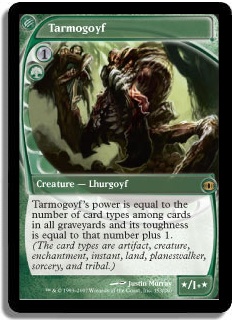 |
vs. |
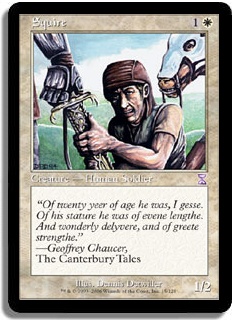 |
Squire is too far below the base power level (basically he sucks) and Tarmogoyf is simply too far beyond the power level (he’s busted), and so I don’t use either one.
My rule of thumb is that if two different players both remark that a card sucks, I simply cut it. The matter of a card being too good is a trickier matter, since players rarely complain about drawing cards that are busted—in this case I try to use good judgment about whether or not a card is too dominant.
In contrast, the higher end creatures in my stack tend to be big bodied fliers that specifically do not generate card or board advantage:
You’d be surprised how good these cards actually are even though the common consensus is that these cards are not very good (as they are easily outclassed by cards like Consecrated Sphinx or the Titans).
Not to mention, cards like Shivan Dragon and Mahamoti Djinn are actually pretty fun to play with and not annoying or frustrating to play against. Shivan Dragon doesn’t come down and wipe out my opponent’s board and then win the game next turn if I don’t have a Doom Blade in my hand. However, with that being said: the Djinn will end somebody pretty quickly if they don’t deal with him pretty fast. I won a game yesterday where I dropped a Rancor on Mahamoti Djinn…
“If you think it would be cool to do this, you will most likely really like this format.”
My Big Decklist
Here are the current contents of my stack (I’ve taken the liberty of including an image of the card in each color that has thus far proved to be the most powerful):
Artifacts
“It is possible that Black Vise is the most powerful card in my stack, especially considering that not playing lands out of one’s hand and a bigger than usual maximum hand size makes the card EVEN better than it typically would be (and it’s already pretty darn good!). However, with an almost 600-card stack it doesn’t appear in the opener very often, but when it does look out!
Tormod’s Crypt
Engineered Explosives
Nihil Spellbomb
Flight Spellbomb
Brittle Effigy
Origin Spellbomb
Glasses of Urza
Sylvok Lifestaff
Basilisk Collar
Black Vise
Darksteel Axe
Brass Man
Bonesplitter
Phyrexian Furnace
Pyrite Spellbomb
Aether Spellbomb
Ivory Tower
Mask of Memory
Contagion Clasp
Culling Dais
Bladed Pinions
Myr Sire
Mask of Avacyn
Shrine of Piercing Vision
Lightning Greaves
Wall of Tanglecord
Spellskite
Manriki-Gusari
Mortarpod
Trip Noose
Crystal Shard
Tumble Magnet
Grafted Wargear
Suntouched Myr
Loxodon Warhammer
Whispersilk Cloak
Granite Shard
Icy Manipulator
Trigon of Infestation
Junktroller
Tawnos’s Coffin
Dancing Scimitar
Peace Strider
Barl’s Cage
Serrated Arrows
Living Wall
Etched Oracle
Skinwing
Jade Monolith
Juggernaut
Trigon of Thought
Strandwalker
Clone Shell
Triskelion
Red
“Rolling Thunder is probably the BEST card in my stack and tends to be very difficult to beat in the later stages of the game when it resolves. It is definitely a nostalgia include: “Why is this card a common?” I have no idea!
Gut Shot
Forked Bolt
Lightning Bolt
Reckless Charge
Shock
Chain Lightning
Faithless Looting
Pillar of Flame
Seal of Fire
Dead / Gone
False Orders
Geistflame
Forge[/author] Devil”][author name="Forge"]Forge[/author] Devil
Burst Lightning
Engulfing Flames
Galvanic Blast
Firebolt
Red Elemental Blast
Kird Ape
Tarfire
Grim Lavamancer
Punishing Fire
Tribal Flames
Incinerate
Ancient Grudge
Fork
Whipflare
Desperate Ravings
Volcanic Hammer
Sudden Shock
Burning Oil
Arc Trail
Pyroclasm
Mogg War Marshal
Tin Street Hooligan
Torch Fiend
Thunderscape Battlemage
Carbonize
Fires of Undeath
Resounding Thunder
Rolling Temblor
Rift Bolt
Blisterstick Shaman
Yamabushi’s Flame
Fire Imp
Cunning Sparkmage
Brimstone Volley
Ghitu Slinger
Granite Gargoyle
Arc Lightning
Sedge Troll
Shunt
Pyreheart Wolf
Barbed Lightning
Mountain Yeti
Tormentor Exarch
Blind With Anger
Anger
Mad Prophet
Roc of Kher Ridges
Flametongue Kavu
Grab the Reins
Reckless Wurm
Zealous Conscripts
Ogre Savant
Thunderous Wrath
Shivan Dragon
Volcanic Dragon
Slice and Dice
Fireball
Disintegrate
Starstorm
Rolling Thunder
Black
Â
“Coffin Queen (along with Dimir Doppelganger) is an exception to my typical rule where I’ve included rares that do have the ability to take over the game. However, both have fragile bodies and die to basically everything. More often than not these guys bite a removal spell and the game moves on; however, when they live they are very powerful. I also like these cards because they provide splash graveyard hate, an effect that is difficult to balance in a huge deck.
Ostracize
Thoughtseize
Unearth
Deadly Allure
Despise
Cremate
Duress
Disfigure
Will-o’-the-Wisp
Ghastly Demise
Inquisition of Kozilek
Dead Weight
Diregraf Ghoul
Gravecrawler
Tragic Slip
Executioner’s Capsule
Doom Blade
Terror
Victim of Night
Go for the Throat
Nezumi Graverobber
Cabal Interrogator
Butcher Ghoul
Animate Dead
Grasp of Darkness
Grim Harvest
Last Gasp
Wei Ambush Force
Smother
Hymn to Tourach
Night’s Whisper
Dance of the Dead
Withered Wretch
Disturbed Burial
Chainer’s Edict
Corrupt Court Official
Black Cat
Diabolic Edict
Reassembling Skeleton
Rotting Giant
Rend Flesh
Phyrexian Rager
Coffin Queen
Dark Banishing
Crypt Rats
Infest
Sudden Death
Vampire Nighthawk
Ichor Slick
Royal Assassin
Hypnotic Specter
Dismember
Liliana’s Specter
Bone Shredder
Falkenrath Noble
Barter in Blood
Entomber Exarch
Juzam Djinn
Vampire Outcasts
Bog Wraith
Sever the Bloodline
Ancient Craving
Consuming Vapors
Seize the Soul
Damnation
Nekrataal
Keening Banshee
Banshee
Massacre
Moan of the Unhallowed
Skinrender
Hideous Laughter
Dakmor Plague
Serpent Assassin
Shriekmaw
Sengir Vampire
Ribbons of Night
Famine
Unburial Rites
Annihilate
Okiba-Gang Shinobi
Dark Hatchling
Enslave
Death Rattle
Phyrexian Gargantua
Skeletal Wurm
Black Sun’s Zenith
White
“Swords to Plowshares is probably the best card in the stack; the ability to answer aggressive threats for value early on in the game or kill one of the opponent’s best cards later is just more proof that STP is one of the most powerful spells ever printed.”
Condemn
Reciprocate
Doomed Traveler
Loam Lion
Bandage
Righteousness
Soul’s Attendant
Savannah Lions
Sunlance
Ghost-Lit Redeemer
Abu Ja’far
Mana Tithe
Swords to Plowshares
Mother of Runes
Isamaru, Hound of Konda
Knight of Meadowgrain
Lone Missionary
War Priest of Thune
Ajani’s Pridemate
Apostle’s Blessing
Gallantry
White Knight
Feeling of Dread
Knight of the Holy Nimbus
Alabaster Mage
Wall of Omens
Angelic Wall
Temple Acolyte
Spectral Lynx
Momentary Blink
Disenchant
Test of Faith
Oblivion Ring
Wing Shards
Pulse of the Fields
Order of Whiteclay
Lingering Souls
Flickerwisp
Glorious Anthem
Pariah
Scepter of Dominance
Porcelain Legionnaire
Stonecloaker
Radiant’s Judgment
Dismantling Blow
Exile
Shrieking Grotesque
Azorius Herald
Timely Reinforcements
Kor Sanctifiers
Midnight Haunting
Griffin Guide
Survival Cache
Renewed Faith
Arrest
Day of Judgment
Wall of Reverence
Teroh’s Faithful
Wrath of God
Resounding Silence
Wall of Swords
Seraph of Dawn
Seed Spark
Commander Eesha
Valor
Mausoleum Guard
Faith’s Fetters
Glimmerpoint Stag
Hallowed Burial
Cloudgoat Ranger
Rout
Serra Angel
Austere Command
Banishing Stroke
Final Judgment
Terminus
Akroma’s Vengeance
Ancestor’s Prophet
Archangel
Divine Deflection
Green
“One might be surprised to hear that Wild Mongrel is debatably the best green card in my big deck and also one of the best cards in the stack overall. Since players typically have more cards in hand because they don’t have to play lands from the grip, he’s got more ammunition to grow than usual. Also, he’s very difficult (if not impossible) to burn out and the ability to change color to dodge ‘terror’ effects also makes him difficult to answer.”
Giant Growth
Essence Warden
Rancor
Twinblade Slasher
Nimble Mongoose
Skyshroud Elite
Mutagenic Growth
Wild Nacatl
Pouncing Jaguar
Withstand Death
Basking Rootwalla
Thornscape Apprentice
Nature’s Claim
Avoid Fate
Granger Guildmage
Regrowth
Seton’s Scout
Skinshifter
Ambush Viper
Thornweald Archer
Wall of Mulch
Wall of Blossoms
Deranged Outcast
Jade Mage
Dryad Sophisticate
Resounding Roar
Strangleroot Geist
River Boa
Kavu Predator
Moment’s Peace
Predator’s Strike
Quirion Dryad
Wild Mongrel
Boneyard Wurm
Kavu Predator
Rushwood Dryad
Elvish Visionary
Tracker’s Instincts
Zodiac Rooster
Boar Umbra
Eternal Witness
Isao, Enlightened Bushi
Krosan Grip
Great Sable Stag
Gnaw to the Bone
Wild Hunger
Gaea’s Anthem
Natural End
Uktabi Orangutan
Carven Caryatid
Krosan Beast
Thornscape Battlemage
Imperious Perfect
Citanul Woodreaders
Viridian Shaman
Call of the Herd
Lurker
Wolfir Avenger
Caller of the Claw
Loaming Shaman
Splinterfright
Hedge Troll
Harmonize
Storm Seeker
Patagia Viper
Obstinate Baloth
Briarpack Alpha
Giant Spider
Briarhorn
Lumberknot
Cudgel Troll
Brawn
Phantom Centaur
Jaddi Lifestrider
Silklash Spider
Spider Spawning
Indrik Stomphowler
Stingerfling Spider
Roar of the Wurm
Howlgeist
Grim Flowering
Autumn Willow
Maul Splicer
Pelakka Wurm
Winter Blast
Serene Sunset
Blue
“Good ol’ Control Magic. It was one of the best cards when the game began, and it’s still way above the curve.”
Ancestral Vision
Force Spike
Unsummon
Stormscape Apprentice
Silent Departure
Vapor Snag
Divert
Dispel
Visions of Beyond
Nephalia Smuggler
Envelop
Saving Grasp
Gitaxian Probe
Sleight of Hand
Impulse
Lat-Nam’s Legacy
Think Twice
Evasive Action
Copy Artifact
Willbender
Negate
Peel from Reality
Merfolk Looter
Essence Scatter
Into the Roil
See Beyond
Worldly Tutor
Azure Mage
Fog Bank
Snapcaster Mage
Remove Soul
Phantasmal Image
Negate
Mana Leak
Remand
Redirect
Miscalculation
Counterspell
Wu Spy
Psionic Blast
Aether Adept
Court Hussar
Crippling Chill
Circular Logic
Wall of Air
Forbid
Divination
Fettergeist
Spined Thopter
Repulse
Repulse
Frantic Search
Thirst for Knowledge
Man-o’-War
Exclude
Bonded Fetch
Sea Gate Oracle
Counsel of the Soratami
Dissipate
Complicate
Serendib Efreet
Forbidden Alchemy
Scroll Thief
Pestermite
Concentrate
Dismiss
Tezzeret’s Gambit
Tower Geist
Deep Analysis
Sift
Control Magic
Mist Raven
Amass the Components
Fact or Fiction
Steamcore Weird
Steal Artifact
Wonder
Clone
Jolting Merfolk
Thieving Magpie
Careful Consideration
Inspired Sprite
Rewind
Dungeon Geists
Jace’s Ingenuity
Allied Strategies
Air Elemental
Tidings
Murder of Crows
Mulldrifter
Drake Umbra
Persuasion
Power Sink
Braingeyser
Repeal
Mind Spring
Mahamoti Djinn
Opportunity
Jetting Glasskite
Gold / Hybrid
Hindering Light
Terminate
Azorius Guildmage
Qasali Pridemage
Tidehollow Sculler
Azorius Guildmage
Swerve
Sigil Blessing
Seeds of Strength
Grizzled Leotau
Goblin Legionnaire
Castigate
Hull Breach
Fire / Ice
Heroes’ Reunion
Tidehollow Strix
Selesnya Guildmage
Watchwolf
Groundling Pouncer
Diabolic Vision
Jhessian Infiltrator
Agony Warp
Countersquall
Deft Duelist
Lightning Helix
Golgari Guildmage
Artifact Mutation
Blightning
Riptide Crab
Hit / Run
Behemoth Sledge
Harmonic Sliver
Rhox War Monk
Woolly Thoctar
Dimir Doppelganger
Anurid Brushhopper
Jund Charm
Armadillo Cloak
Plumeveil
Putrefy
Adun Oakenshield
Esper Charm
Sedraxis Specter
Vithian Renegades
Consume Strength
Goblin Flectomancer
Psychatog
Firespout
Consult the Necrosages
Dromar’s Charm
Maelstrom Pulse
Kitchen Finks
Unmake
Plaxcaster Frogling
Ebony Treefolk
Noble Panther
Mortify
Trygon Predator
Electrolyze
Xira Arien
Bant Charm
Naya Charm
Pernicious Deed
Fires of Yavimaya
Gelectrode
Intimidation Bolt
Sprouting Thrinax
Absorb
Pillory of the Sleepless
Wall of Denial
Ancient Spider
Mystic Snake
Spite / Malice
Bloodbraid Elf
Moroii
Hellhole Rats
Murderous Redcap
Blazing Specter
Captured Sunlight
Loxodon Hierarch
Lightning Angel
Jungle Barrier
Flame-Kin Zealot
Evil Twin
Rubinia Soulsinger
Bituminous Blast
Dakkon Blackblade
Hymn of Rebirth
Tor Wauki
Prophetic Bolt
Izzet Chronarch
Giant Ambush Beetle
Kiss of the Amesha
Enlisted Wurm
Bull Cerodon
Deepfire Elemental
Death Grasp
Savage Twister
Lady Caleria
The last note that makes my deck pretty unique is that I’ve decided to Beta/foil the whole thing out (most of the cards are fairly inexpensive because they are just commons and uncommons), and to add to the ambiance of playing “old school Magic” it is completely unsleeved (except for the mana, which is sleeved simply so that when they get shuffled back into the deck after literally every single game they are easy to retrieve).
As you may have noticed, my deck is pretty well set up to play games that are likely to go a little bit longer than is typical in Constructed formats. In general, the rule of thumb I used was that I wanted a balance in my deck between creatures that were good at attacking and good at blocking. One thing I like about both players playing off the same deck is that while in general playing a deck that emphasizes blocking in Constructed tends to be bad, when both players are using the same deck and there are no Titans and Cruel Ultimatums defending can actually be quite good.
Here are a few variants I have played so far with the Mana Cache / Big Deck system over the course of the past few weeks.
I. Chaos Deck / Planechase Deck
One way to create further interesting, variant games of Magic is to play with a Chaos deck. The Chaos deck is another stack of preselected cards that will randomly affect the game.
For my Chaos deck I like to have a stack of global enchantments that at the start of the game 1 of them is randomly flipped up and that effect lasts for the entire game. Personally, I don’t like when the effects randomly change or happen throughout the game because it tends to be really random and makes playing for subsequent turns difficult if not impossible. Some of the cards that I choose to play with in my Chaos deck are:
I don’t personally own any Planechase cards, but that could be another fun option to try.
II. One-on-One Draft for Danger Room
We have actually tried a couple of random drafts with the deck, and they are all also pretty fun. Aside from simply repacking the cards and doing a traditional draft, which is fine, the coolest way of drafting this format was actually suggested by Patrick Chapin.
The most fun drafting format I’ve found for the Danger Room 1 V 1 works as follows:
A player takes the top five cards off of the deck and puts them into two piles, similarly to playing the card Fact or Fiction, and the other player selects which pile he or she wants—and the person dividing the pile gets the other. The process goes back and forth alternating between who is making the pile and who is choosing the pile until one player has a deck of 50 cards. (Decking is a viable option in this draft format, so one needs to be careful they don’t give an opponent a 50-card deck while only having 25 cards themself!).
Or:
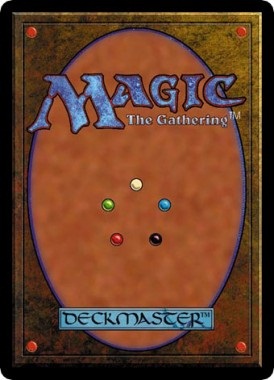

“Which pile would you take?”
However, to keep things interesting—of the two piles a player makes, only one of them is presented face up, while the other one is presented face down with its contents unknown!
It makes for some pretty sweet mind games! Did he put junk under there, or is a better card hidden? It makes for a pretty fun time. One thing we pretty quickly figured out about this is that both players should be making piles at the same time and then deciding at the same time—since it makes the drafting process take half as long.
III. Emperor
For those of you who haven’t been playing Magic for ages and ages, many players are not familiar with Emperor Magic, which is a kind of multiplayer format that was popular before EDH.
One thing that is kind of cool about having the more balanced big deck is that it provides a pretty sweet compilation of cards for playing Emperor Magic, a format that while really cool in theory has almost always been abhorrent to play in real life. The problem with Emperor is that a lot of types of cards and effects tend to simply take over the game and end it—or one of your teammate’s decks is terrible, or somebody’s is too geared for multiplayer and it ends up turning into a bloodbath. Breaking up my big deck, which is for the most part evenly balanced, and providing everybody with even access to mana actually fixes most of the problems that caused that format to fall out of popularity.
For those of you who don’t know how the format is played, here’s a quick tutorial.
There are two teams of either three players or five players, and they are seated next to each other on one side of the table. The opposing team of the same number of players is on the other side of the table. The player in the middle is the Emperor, and the players on his sides are the Generals. If a team’s Emperor dies, the opposing team wins.
Spells have a range of one, which means they can target the player immediate to your right or left (an opposing player and usually an allied player—unless you are the Emperor and all of your Generals are dead, in which case it is possible to have an opposing General on your right and the opposing Emperor to your left!), so you can’t shoot spells through players who are being buffered. For instance, a General on the end can’t cast Fireball targeting an opposing Emperor who has one of his Generals between him and the opponent trying to cast Fireball.
Each player has 20 life, so basically one team is trying to kill off the buffer General(s) in order to be able to attack the opposing General.
Play starts with one team’s Emperor playing first and play proceeding from left to right around the table.
The last cool aspect of this format is that during a player’s turn they are allowed to pass permanents that began the turn under their control to an allied player adjacent to them. So if the Emperor cast a creature last turn, on his next turn he can give it to one of his Generals to attack or defend with!
It’s pretty sweet, and the big deck I have designed for The Danger Room divided up into random stacks actually makes for pretty awesome games of Emperor.
Conclusion
I’ve been having a ton of fun playing this new format with my friends and wanted to share it with all of you ladies and gentlemen who read my articles.
The thing that I like about it so much is that it provides a type of Magic game that I really enjoy playing that really is provided by any format that people regularly play. It’s kind of cool, too, that I can simply pull the cards out of the box and the entire game is immediately ready to play. In that regard it’s kind of like playing “Magic: The Board Game” or Ascension since it doesn’t require two separate decks or every person who wants to play to have a deck.
The other thing that I think is really neat about a format like this is that if you look at the list of cards that are in my deck (with the exception of random old cards like Juzam Djinn, which is mainly just in there because I think he’s cool), the overwhelming majority of the cards in a deck like this are random commons and uncommons. The first draft of the big deck I put together was built almost exclusively from my big box of commons and uns that I kept because they were too good to bulk out but not so good that I ever really played them in Constructed formats. With that in mind, building one of these decks is extremely cheap considering the amount of play that I’ve gotten out of it!Â
If it sounds cool you should give it a try! The worst that can happen is that all of those random cool cards that everybody wants to play with but never do go back into your bulk box and continue to not get played with.
Thanks for reading.
Cheers,
Brian DeMars

